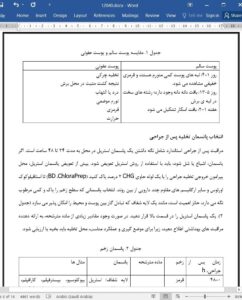Surgical site infections are signifi cant contributors to health care–associated infections. Nursing interventions may help decrease the incidence of surgical site infections, particularly in regards to the management of postsurgical abdominal drains. This comprehensive guide, compiled from evidence-based practice literature, is intended for nurses to use to reduce surgical site infections secondary to postsurgical abdominal drains. This article focuses on drain management in intensive care unit patients, who are at risk for infection because of their immunocompromised state.
Health care–associated infections (HAIs) result in lengthened hospital stays, increased medical costs, and poorer patient outcomes.1 Studies of evidence-based practice have shown that nursing interventions help reduce the incidence of HAIs. For example, since 2008 the “Scrub the Hub” campaign has contributed to a 50% reduction in central catheter–associated bloodstream infections (CLABSIs).2,3
Conclusion
To effectively decrease the patient’s risk of developing an SSI related to abdominal drains, a thorough assessment, routine drain maintenance, and communication with the provider regarding indications for discontinuing the drainage catheter should be performed. Although many of these actions occur during the shift assessment, drain maintenance is a continual process that requires vigilance by the nurse, even among immobile patients in the ICU. By following the guidelines discussed in this article, critical care nurses can ensure that even the most immunocompromised ICU patients remain free of SSIs related to postsurgical abdominal drains.











